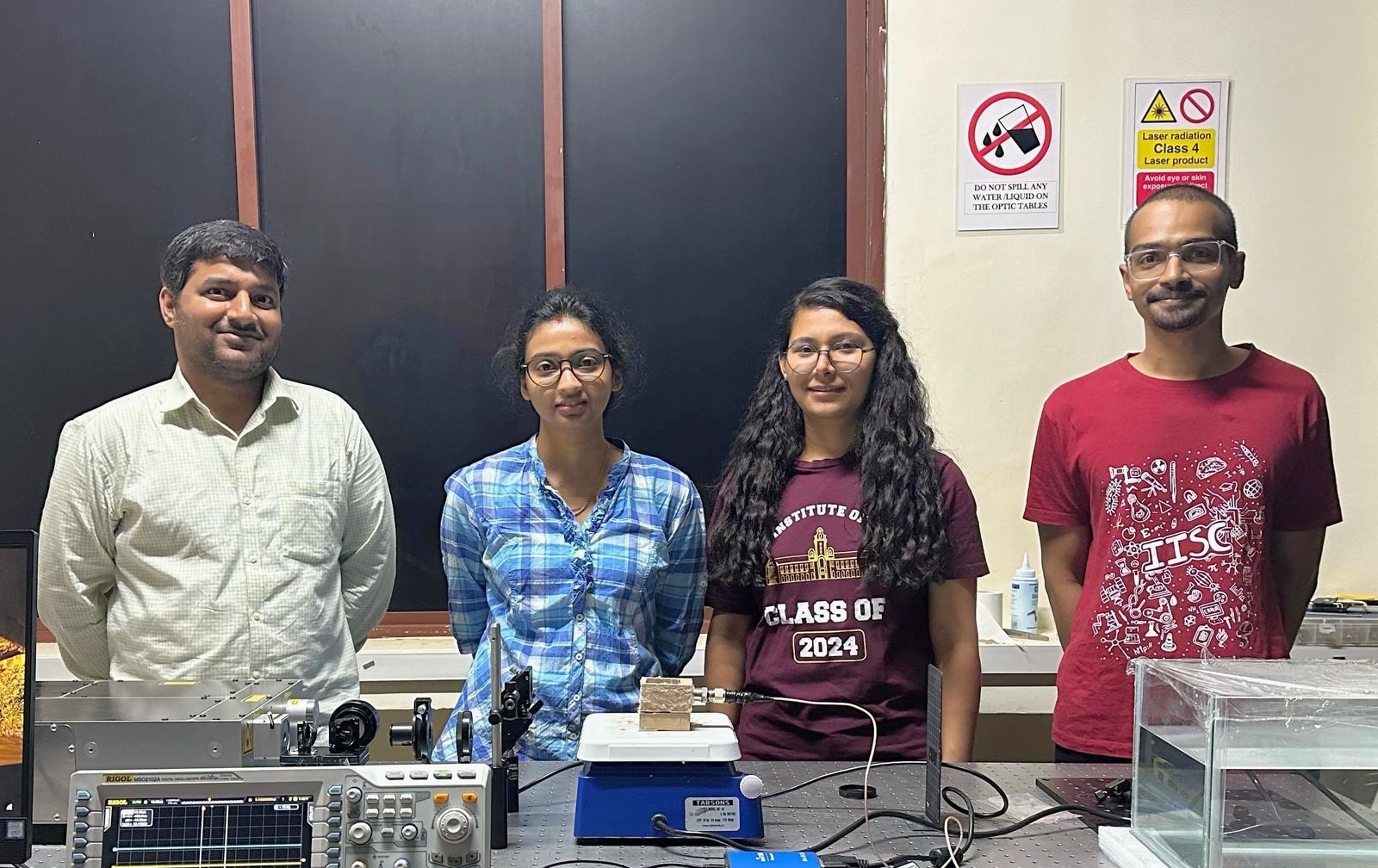If the technology can be miniaturised and made cost-effective, it could revolutionise how people monitor their blood sugar — making needle pricks a thing of the past.
Published Mar 20, 2025 | 3:50 PM ⚊ Updated Dec 31, 2025 | 12:13 PM

The IISc research group members working on developing photoacoustic sensing and imaging technologies. (G Puneeth)
Synopsis: IISc Bengaluru scientists have developed a needle-free glucose test that relies on light and sound. The new method, using photoacoustic sensing, uses laser beams to measure glucose concentration inside the body without breaking the skin.
For millions of people with diabetes, the daily ritual of pricking their fingers to check blood sugar levels is painful, inconvenient, and sometimes risky due to infection concerns. What if glucose monitoring could be done without a single drop of blood? Scientists at the Indian Institute of Science (IISc) Bengaluru have developed a painless and needle-free diabetes test that relies on light and sound rather than invasive blood sampling.
The new method, using photoacoustic sensing, uses laser beams to measure glucose concentration inside the body without breaking the skin.
“When a laser shines on biological tissue, the light is absorbed, causing the tissue to heat up slightly and expand. This expansion creates tiny vibrations that generate sound waves,” explained Jaya Prakash, Assistant Professor at the Department of Instrumentation and Applied Physics (IAP) at IISc and corresponding author of the study published in Science Advances.
The researchers, according to a release by the IISc, said they discovered that glucose changes the intensity of these sound waves, allowing them to measure blood sugar levels accurately.
Traditional glucose tests require frequent blood samples, which are not only painful but also increase the risk of infections. Continuous glucose monitors (CGMs) offer a less painful option, but they still require the insertion of a sensor under the skin.
However, the IISc team’s innovation could be a game-changer by eliminating the need for any kind of penetration.
To test their approach, the researchers first experimented with glucose solutions in water and serum before moving on to animal tissue samples. The results showed that their method could estimate glucose concentration with near-clinical accuracy.
They also discovered that glucose, which is a chiral molecule (a molecule having an asymmetric structure), interacts uniquely with polarised light (light that oscillates in a specific direction). Sunglasses, for example, reduce glare by blocking out light waves that oscillate in certain directions.
Jaya Prakash explained that they have yet to understand why the acoustic signal changes when they change the polarisation state.
“However, we have been able to establish a clear relationship between glucose concentration and the intensity of the acoustic signal at a particular wavelength,” said Prakash.
Glucose has a natural ability to rotate polarised light, and this rotation increases with its concentration. The IISc team found that this rotation alters the intensity of the sound waves generated by the photoacoustic effect.
By measuring the strength of these sound waves, they could estimate the amount of glucose in a given sample. The researchers also tested whether this method could work at different depths within tissue. The results were promising.
“Since sound waves don’t scatter as much as light inside the tissue, we were able to get accurate measurements at various tissue depths,” explained Swathi Padmanabhan, PhD student and first author of the paper.
To take this research a step further, the team conducted a pilot study on a human participant, tracking their blood glucose levels before and after meals over three days. The technique successfully detected changes in glucose levels, reinforcing its potential for real-world use.
Despite its promise, the technology is not yet ready for commercial use. One of the biggest challenges is the size and cost of the laser setup.
“The laser source we use right now generates very small nanosecond pulses, which makes it expensive and bulky. We need to make it more compact and affordable to bring it into clinical practice,” said Padmanabhan.
The researchers are already working on refining the technology. If successful, it could pave the way for portable, non-invasive glucose monitors, eliminating the pain and hassle of finger pricks forever.
Interestingly, the team’s findings suggest that photoacoustic sensing could be used to detect other molecules as well. Many commonly used drugs, like naproxen (a painkiller), are also chiral in nature.
The researchers successfully measured naproxen concentration in an ethanol solution using the same technique, proving that it could have applications beyond diabetes.
“Theoretically, by adjusting the light’s wavelength, this method could be used to detect various chiral molecules, which opens up exciting possibilities in healthcare and diagnostics,” said Prakash.
The study, published in Science Advances, is a significant step toward a future where managing diabetes is painless and convenient.
If the technology can be miniaturised and made cost-effective, it could revolutionise how people monitor their blood sugar — making needle pricks a thing of the past.
(Edited by Muhammed Fazil.)
